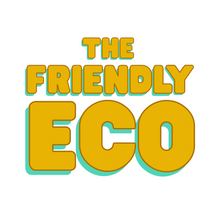Cloth nappies have been gaining popularity in recent years, and it's not difficult to see why! Cloth nappies are a great way to save money, reduce the environmental impact of having a baby, and still enjoy the convenience of quick changes. In this post we will discuss how cloth nappies work and what benefits they provide.
What is a cloth nappy?
A cloth nappy is essentially a nappy which can be washed and reused over and over again. They're nothing like they were thirty years ago though! You simply put the nappy in the washing machine with regular detergent when it's dirty, then back on baby when it's clean and dry. No boiling, soaking or scrubbing required!
How do cloth nappies work?
Cloth nappies are essentially made up of two parts, just like a disposable you have a waterproof outer and an absorbent inner. The outer is generally made of PUL (polyurethane laminate), which is waterproof and held in place by poppers or applix. While the inner is made of absorbent materials such as cotton or bamboo, to absorb the wee and poo. When it becomes soiled (usually after a few hours) you simply remove it and replace with another clean one for continued use!
Cloth nappies come in a variety of styles but so long as you have both parts then you've got the right idea! Some are ready to go - such as 'all in one' nappies, and some need a bit of prep but are quicker to dry due to the absorbent layers being able to separate from the outer, such as pocket nappies.
What are the benefits?
Cloth nappies offer a number of benefits for parents, babies and the environment! They can save anywhere from £500-£1000 in their lifetime by reducing your need to buy disposables. The average baby will use up to 5000 disposable nappies before they potty train, but with cloth this number can be as low as just 25 reusable nappies from birth to potty training - and these can last multiple children too!
Cloth nappies are also great for the environment, as they're eliminating a potential 5,000 plastic single-use nappies from landfill per child and are actually much more water efficient than disposables.
Cloth nappies are also great for baby's skin and development too! The natural materials widely used in cloth nappies are less likely to cause a skin reaction, and they also encourage wide hip placement for the prevention of hip problems.
Not to mention the cute prints and styles!
In short
If you're looking for a way to reduce your environmental impact, save money, and still enjoy the convenience of quick changes - then give cloth nappies a try! If you are interested in finding out more about how to get started with reusable cloth then head over to our blog for more information and some helpful resources.
We hope you enjoyed this post, please share with your friends!

